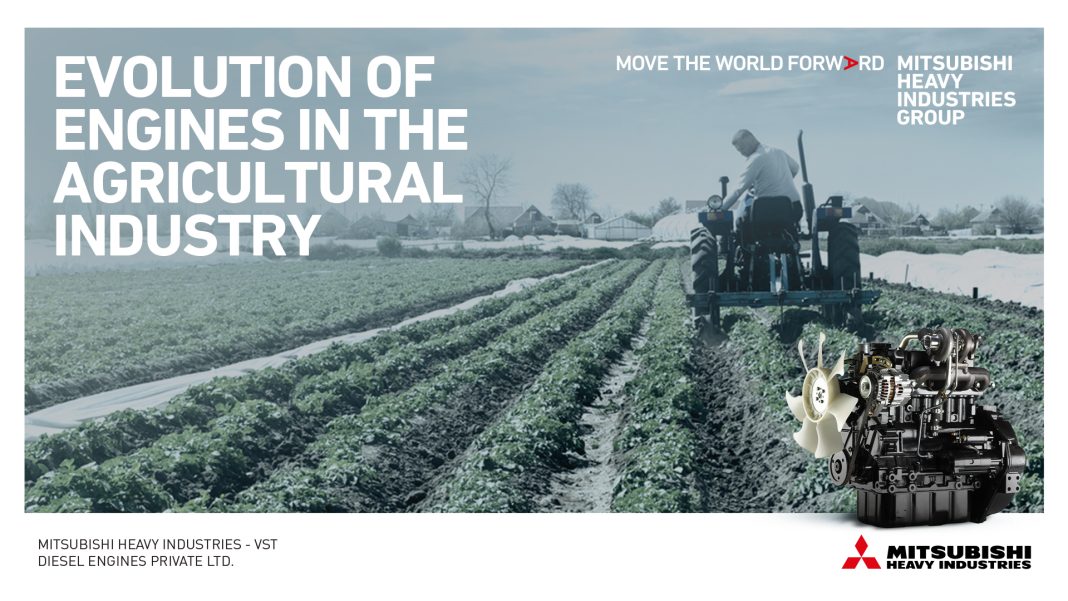Evolution has always been part of human existence. Evolving from hunters and gatherers society to agriculture was a monumental shift for the human revolution. And as new inventions and revolutions were introduced, the agriculture sector kept evolving. From plowing fields using animals to using machines, from tiling fields using hands using basic tools to using agriculture diesel engine, the industry kept on evolving.
Without a doubt, engines and innovations have completely changed the agricultural scenario for the good. The rhythmic hum of a tractor’s engine cutting through a field, the steady beat of a combine harvester processing crops, and the power of heavy machinery tilling the land — these are the sounds that define modern agriculture. But all this transformation took years, and behind this symphony of progress lies a fascinating story of how engines have evolved in tandem with the agricultural industry.
The Dawn of Agricultural Revolution
Before the advent of engines, agriculture was a labour-intensive endeavour. Fields were tilled by hand using basic tools, and planting and harvesting were entirely manual processes. As societies grew, so did the need for increased agricultural productivity. The Industrial Revolution of the 18th and 19th centuries marked the beginning of significant changes in various sectors, including agriculture.
The industrial revolution had a slight adverse impact on agriculture as many farmers and owners made a shift and started working in factories. But the silver lining of the industrial revolution for the agriculture sector was the introduction of machines.
Introduction of Steam Engine
The steam engine, a hallmark of the Industrial Revolution, also made its mark in agriculture. The transition from human and animal power to steam-powered machinery revolutionized farming.
In 1812, Richard Trevithick created the inaugural ‘semi-portable’ stationary steam engine designed for agricultural applications, referred to as a “barn engine.” This innovation powered a corn threshing machine. Then it was in the 1850s, in Europe, when steam engines were used for plowing.
The Rise of Gasoline Engines
During the late 19th and early 20th centuries, a significant transformation occurred with the emergence of internal combustion engines taking over from steam engines. These newer engines, known for being smaller, more effective, and adaptable, proved more appropriate for agricultural uses. The gasoline engine, invented by Nikolaus Otto in the 1860s and subsequently improved upon by different innovators, played a crucial role in the advancement of machinery like tractors that these engines could drive.
Birth of the Tractor
The tractor emerged as one of the most iconic symbols of agricultural evolution. Initially, the earliest tractors functioned as stationary engines meant for driving other machinery, but their capability for movement was soon acknowledged. Despite facing initial resistance, these tractors powered by gasoline started gaining popularity in the 1910s as their size decreased and costs became more reasonable. It was 1917, when Henry Ford revolutionized the landscape of agriculture by introducing the Fordson, a highly acclaimed tractor produced on a large scale. This instance marked a pivotal juncture, as tractors became essential on farms worldwide.
Tractors brought unprecedented efficiency to farming practices. They could pull plows, harrows, and other implements, significantly reducing the time and labor required for various tasks. This mechanization increased productivity and enabled farmers to cultivate larger land areas, laying the foundation for modern agriculture businesses.
Mechanization and Beyond
As the 20th century progressed, engines continued to evolve alongside agricultural practices. And internal combustion engines continued to be a chosen source of power for the machines. Between 1900 and 1960, gasoline was the predominant fuel, but things started changing in 1960. In the 1960s, diesel engine for agriculture started becoming relevant, and tractor diesel engines brought an incredible transformation.
Although 1892 marked the beginning of diesel engines when Rudolf Diesel, a German inventor and mechanical engineer, developed the first diesel engine prototype. But, the widespread adoption of diesel engines in agriculture gained traction from the 1960s onwards, and diesel engines now powered agricultural tractors. The agricultural sector embraced diesel engines due to their superior fuel efficiency and durability, leading to their prominent role in tractors and machinery. And to this day, the utilization of agricultural diesel engines remains prominent in the agriculture industry
The development of specialized machinery also played a crucial role in the evolution of engines in agriculture. Combine harvesters, for instance, integrate multiple functions like cutting, threshing, and cleaning in a single machine. This consolidation of tasks increased efficiency and reduced the need for manual labor during harvesting.
Sustainability and Environmental Considerations
As agriculture evolved, so did the awareness of its environmental impact. Once seen purely as tools of progress, Engines were now also examined through the lens of sustainability. Manufacturers, such as MVDE India, began to prioritize the development of off-highway diesel engines that were more fuel-efficient and emitted fewer pollutants. This shift aligned with the growing demand for environmentally friendly farming practices.
The Ending Note
This transformational tale of steam engine, tractors, off-highway diesel engine, and more not only showcases technological advancement but also tells us the story of harmony between humans and the land that sustains us. And as we move ahead in time, with more advancements, it is now our prime duty to consider sustainability and the environment in our innovations.









